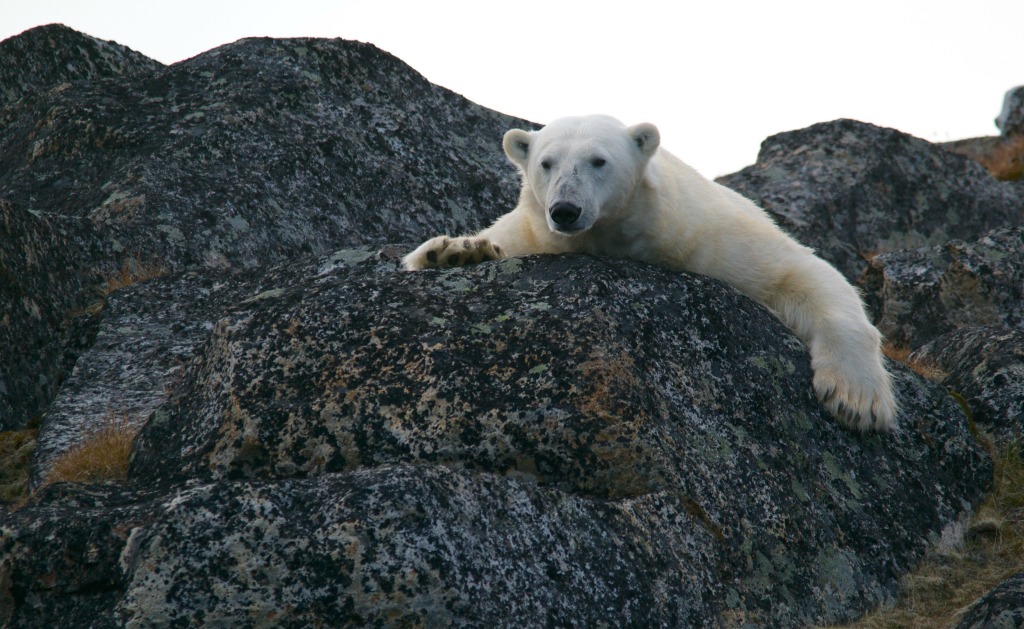
A new study reveals that access to land-based food is not sufficient to reduce overall mass loss rates of fasting polar bears.
"We measured the rates at which different age-classes of polar bears lost weight in a controlled setting during the ice-free period in Hudson Bay," says lead author Nicholas Pilfold, University of Alberta alumnus and a post-doctoral fellow at San Diego Zoo Global. "Despite having access to land-based food, results indicated that free-ranging polar bears lose mass at the same rate as unfed bears."
"It is clear from this study that terrestrial resources cannot save these bears." -Andrew Derocher
The study was conducted by researchers at the University of Alberta, Manitoba Sustainable Development, and Environment and Climate Change Canada, and published in Physiological and Biochemical Zoology. The researchers weighed polar bears at the Polar Bear Holding Facility in Churchill, Manitoba, from 2009 to 2014. On average, polar bears lost one kilogram of mass per day, the same amount as free-ranging bears measured during the ice-free season on the coastline of Hudson Bay.
Limits to how long polar bears can survive without food
"It is clear from this study that terrestrial resources cannot save these bears," says Andrew Derocher, University of Alberta professor (biological sciences) and author in the study. "Further loss of sea ice threatens the persistence of this population. While polar bears are extremely well adapted to extended periods without food, there are limits to how long they can go." Derocher notes that the population of polar bears near Churchill, Manitoba, has declined more than 30 per cent since the 1980s, due to the sea ice melting earlier and forming later.
"Some studies have suggested that polar bears could adapt to land-based foods to offset the missing calories from a shortened on-ice hunting period" says Pilfold. "Our results contradict this hypothesis. Unfed polar bears in our study lost mass at the same rate as free-ranging polar bears that had access to land-based food. Access to land-based foods did not reduce mass loss."
Derocher adds that terrestrial resources simply cannot replace the energy-rich diet of seal blubber that this marine species relies on. The researchers also estimated starvation timelines for adult males and subadults, and results suggested subadults were more likely to starve before adult males. "Subadult polar bears have lower fat stores than adults, and have the added energy demands associated with growth. Future reductions to on-ice hunting opportunities due to sea ice loss will affect the younger age-class polar bears first, especially given that these bears are less experienced hunters," says Pilfold.
The Western Hudson Bay subpopulation is currently stable, as the length of the ice-free season has shown recent, short-term stability. However, past increases in the length of the ice-free season have caused declines in the abundance of bears, with subadults having a higher mortality rate than adults. The current research helps to shed light on the mechanisms of past population declines, as well as provide an indication of what may occur if sea ice declines again.